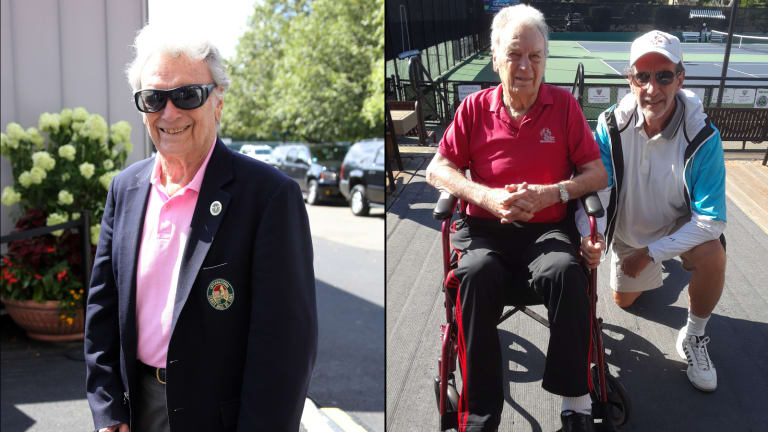Tennis.com Interview
Holding Court with…Vic Seixas, who turns 100 today
By Aug 30, 2023Tennis.com Interview
Jan-Lennard Struff sees Munich title defense bid as 'perfect opportunity' to turn 2025 around
By Apr 14, 2025Tennis.com Interview
Lorenzo Musetti manifested his 'special' week in Monte Carlo with first Masters 1000 final
By Apr 12, 2025Tennis.com Interview
No logic, just a feeling: Andrey Rublev "always knew" he wanted to work with Marat Safin
By Apr 07, 2025Tennis.com Interview
Brad Gilbert, Patrick McEnroe weigh in on U.S. men's tennis evolution
By Apr 05, 2025Tennis.com Interview
Patrick McEnroe decries Jannik Sinner suspension, tags Joao Fonseca as future star
By Apr 04, 2025Tennis.com Interview
On chicken farm, Danielle Collins embraces “crunchy granola lifestyle”
By Apr 03, 2025Tennis.com Interview
Feeling like a teenager, Alizé Cornet, 35, makes triumphant comeback from retirement
By Apr 02, 2025Tennis.com Interview
Danielle Collins launches iconic richsport merch collab
By Mar 07, 2025Tennis.com Interview
Zizou Bergs: From TikTok to Top 50 in Indian Wells?
By Mar 06, 2025Tennis.com Interview
Holding Court with…Vic Seixas, who turns 100 today
As humble and upbeat as ever, the Grand Slam champion from Philadelphia celebrates his centennial birthday.
Published Aug 30, 2023
Advertising

Vic Seixas in his teens, at the William Penn Charter School in Philadelphia, and at the University of North Carolina.
Advertising
Advertising
Advertising
Advertising

Seixas at the 2014 US Open, and more recently, with his friend Allen Hornblum. “Despite his physical infirmities, he’s always upbeat and positive,” says Hornblum. “The guy was built to look forward and push on, no matter the obstacles.”